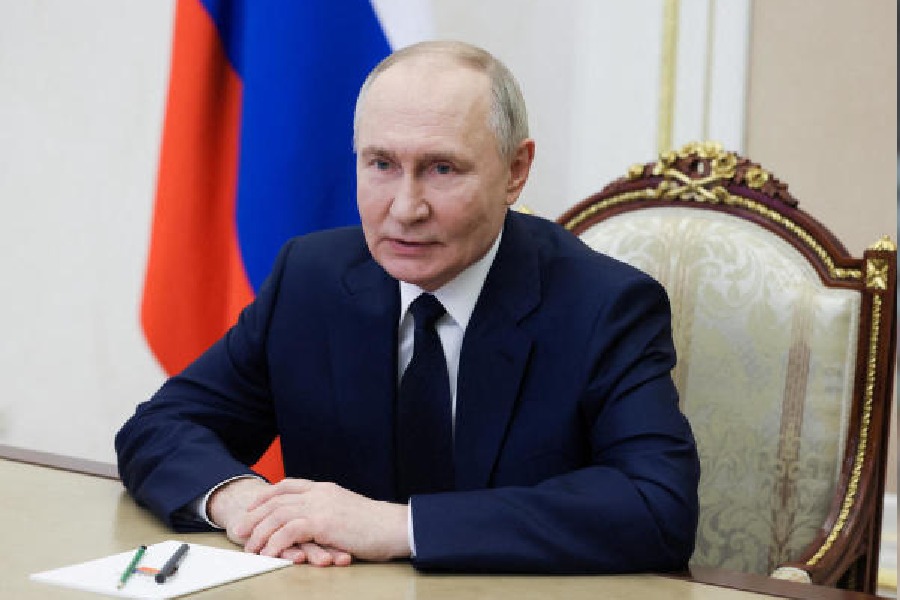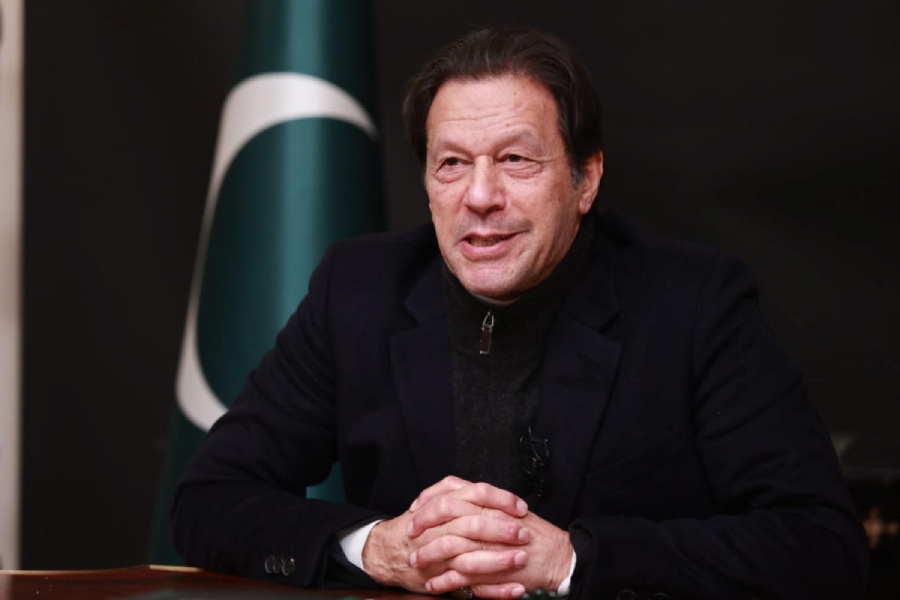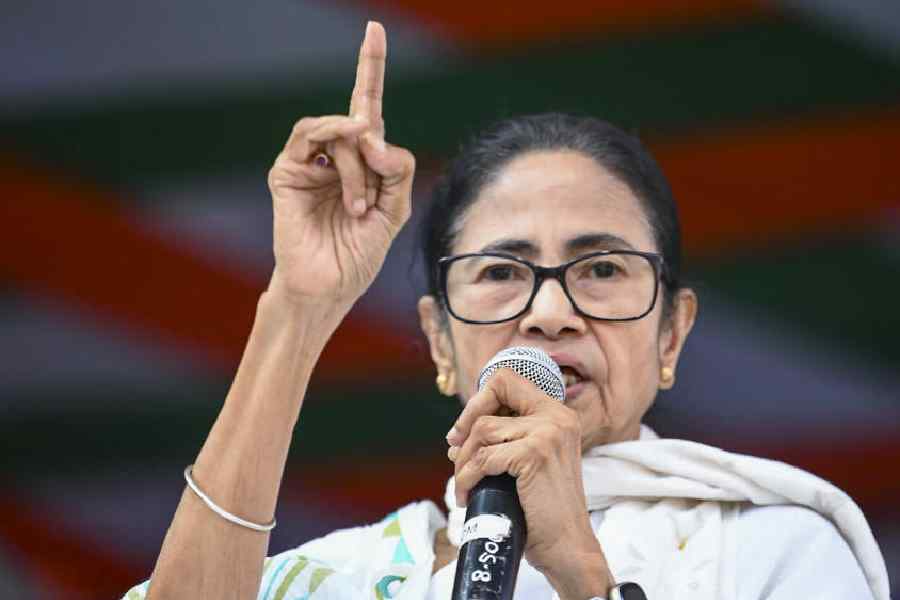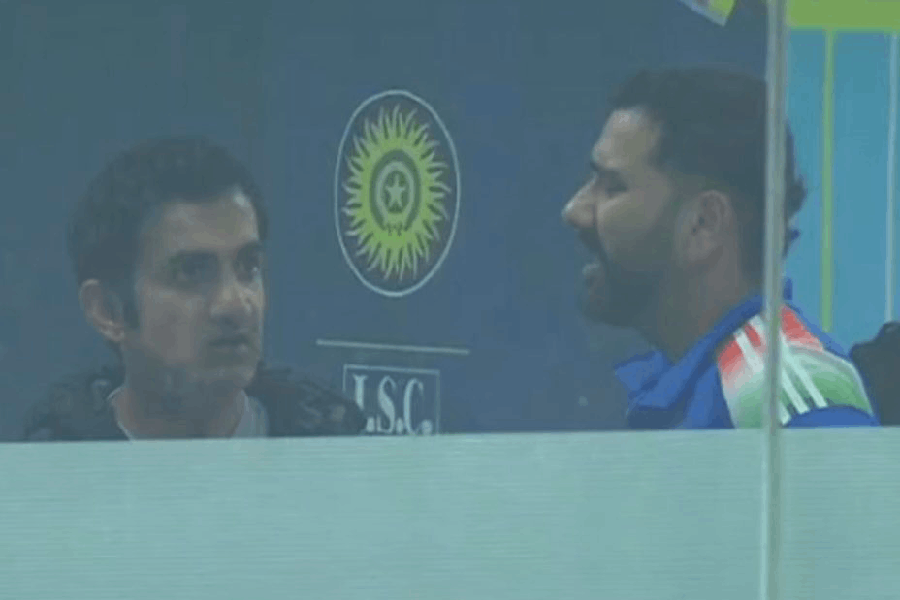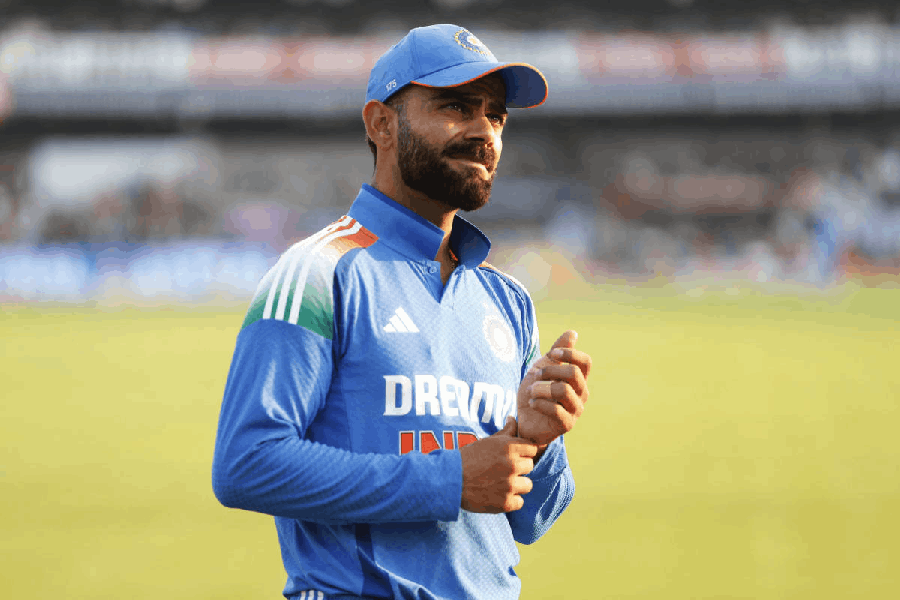Ray as illustrator is unknown to most cine lovers outside Bengal. But that knowledge is essential to understand him as a filmmaker. Teacher-translator-essayist Chinmoy Guha made the observation while discussing Satyajit Ray’s illustrations at a cosy gathering at Read Bengali Books in south Calcutta recently.
Describing Ray as an auteur, he made a distinction between directors who had complete control over every aspect of their film and most others who did not. “Did (Michelangelo) Antonioni know about the poster of his films or the make-up of his characters till the last point like Ray did?” he asked, posing a rhetorical question. “You start seeing a Ray film from the poster itself. He really had an inner eye. His posters and film credits help us grasp the structure of his films,” Guha argued.
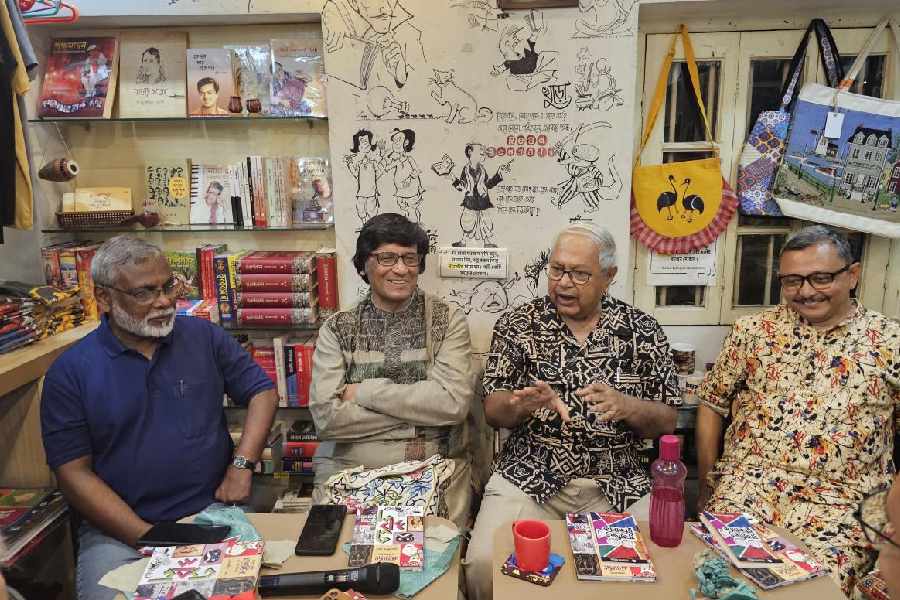
A discussion on Satyajit Ray featuring (l-r) Debashis Deb, Chinmoy Guha, Prasadranjan Ray and Prasenjit Dasgupta at Read Bengali Book Store. Sudeshna Banerjee
Holding up a copy of the book Rong Tulir Satyajit, he said: “This book is an entry point to the world of Satyajit Ray.” The book’s author, artist Debashis Deb, seated next to him, had by then narrated how Guha had inspired him to write on the subject after hearing him speak in office.
“Deb has explained to us details like from which angle the light falls in the booklet of Kanchenjungha. Like in Adi Parba, the whole story of The Mahabharata is told before the narration begins, in Goopi Gyne Bagha Byne the animated credits tell the entire story at the start of the film. The deergho-e in the logo of Devi is reminiscent of arches in a temple. The aw in the title of Aparajito is in a bigger font size. Watching the film starts from there,” Guha said.
He cited another example of how the poster provides a clue to the film’s essence. “In Pratidwandi, there is a sketch of the protagonist holding a pistol in hand. He tries to be a revolutionary in his mental world but fails. Remember the scene in the film when he meets his sister’s boss and shoots at him? But it is only in his imagination. In reality, a fan is switched on in the next shot.”
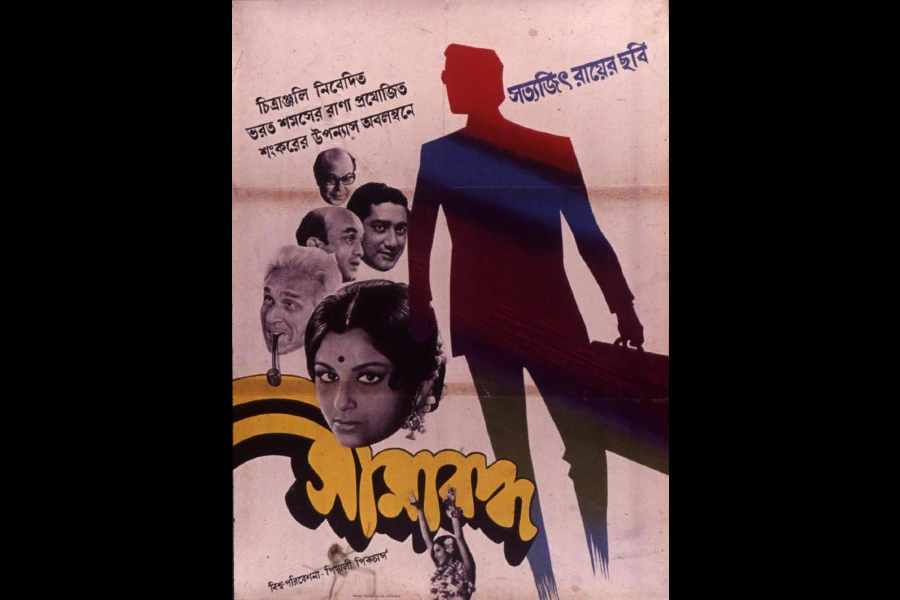
Poster of 'Seemabaddha', where a letter spills out
In Mahanagar, too, Deb has drawn our attention to how the film title is a cityscape, formed of buildings of varying heights. In Seemabaddha, the deergho-e overshoots the limits of the poster and under it, with his head lowered, sits the protagonist. “He used to play with the fonts,” interjected Deb.
A film is usually the result of teamwork. “Only a few filmmakers are capable of handling almost everything,” Guha stated, citing Charlie Chaplin as another example of an auteur. “I have seen in a documentary film on the making of City Lights how Chaplin would shed his wobbling gait of a tramp to walk back swiftly between shots and set up the camera at the required position before transforming back to his persona,” he pointed out.
Western music, records and books
Guha referred to Ray’s deftness in character building. “Even if a person entered the frame for a minute, he became a character in a Ray film. This is not so in Ritwik Ghatak. In an interview late in life, Tapan Sinha was asked what had remained undone. He had lamented that he could not build characters like Ray had done. Think of Tom Alter in Shatranj ki Khiladi,” Guha said, referring to the opening scene where Captain Weston is describing Nawab Wajid Ali Shah as a character to his senior, General Outram.
Another instance Guha cited was where Asim and Aparna pause near a tree towards the end of Aranyer Dinratri, and Aparna asks him: “Apni bodh hoy kono jeebone boro dukkho pan ni, tai na?” Wisdom comes from pain. He quoted Pauline Kael, a noted film critic of The New Yorker, who had described that scene as the most profound interface between man and woman on celluloid.
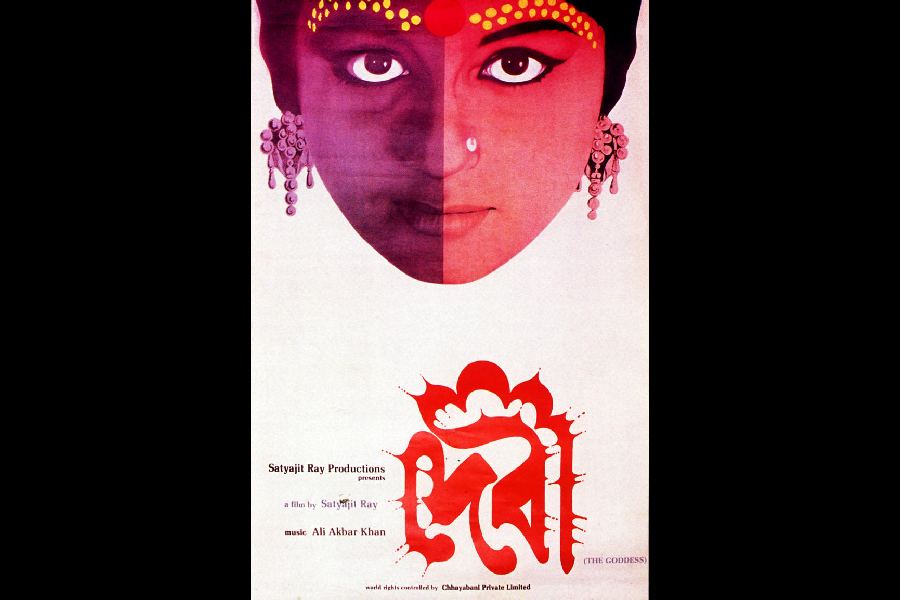
Poster of 'Devi', with an arch reminiscent of a temple
He recalled a chance meeting with Soumitra Chatterjee at a solitary café late in the latter’s life and striking up a conversation on the scene. “He told me that no one had asked him about Asim in the decades that have passed by after the film’s release. Yet he remembers the slap that her comment was like.”
In Goopi Gyne Bagha Byne, the same actor (Santosh Dutta) is cast in both roles — the rulers of Shundi and Halla — to highlight that a man can be good or evil, depending on his circumstances.
Prasadranjan Ray, a member of the family, spoke about the shortening of the surname from Roy Chowdhury to Ray.
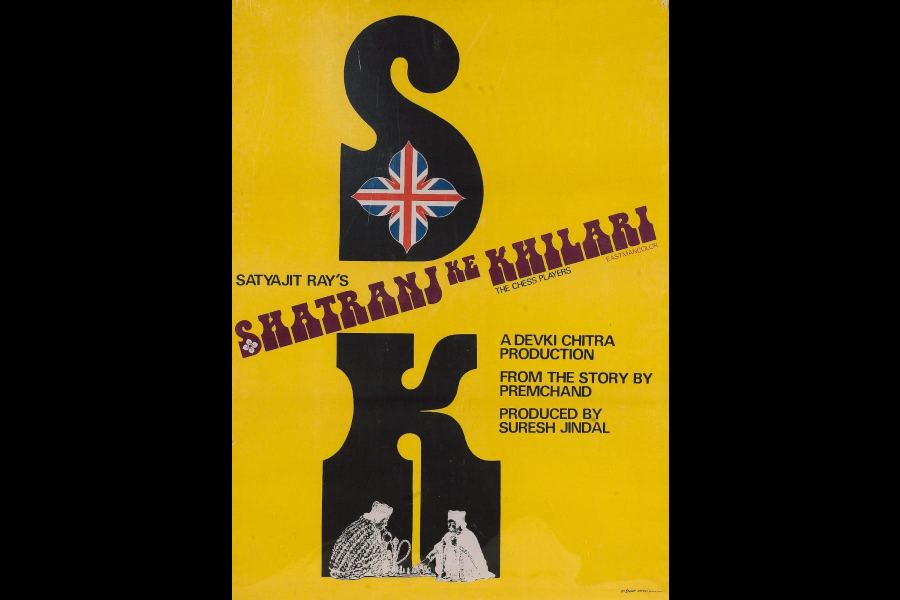
Poster of 'Shatranj Ke Khiladi', with the letters resembling chess pieces
“He had also once told me that he did not enjoy his college life at Presidency. He only liked a teacher of English who had a good collection of Western music records and books.”
He also recalled Ray’s multi-tasking ability. “Ahead of Sukumar Roy’s birth centenary, a Sukumar Mela was being planned. Manikda was unwell but was sketching away while listening to the plans being made. Suddenly he called a teacher of Patha Bhavan and asked for “a few monkeys” to be sent over. ‘You do have quite a few in your school,’ he added, tongue in cheek. I don’t know how he could concentrate!”
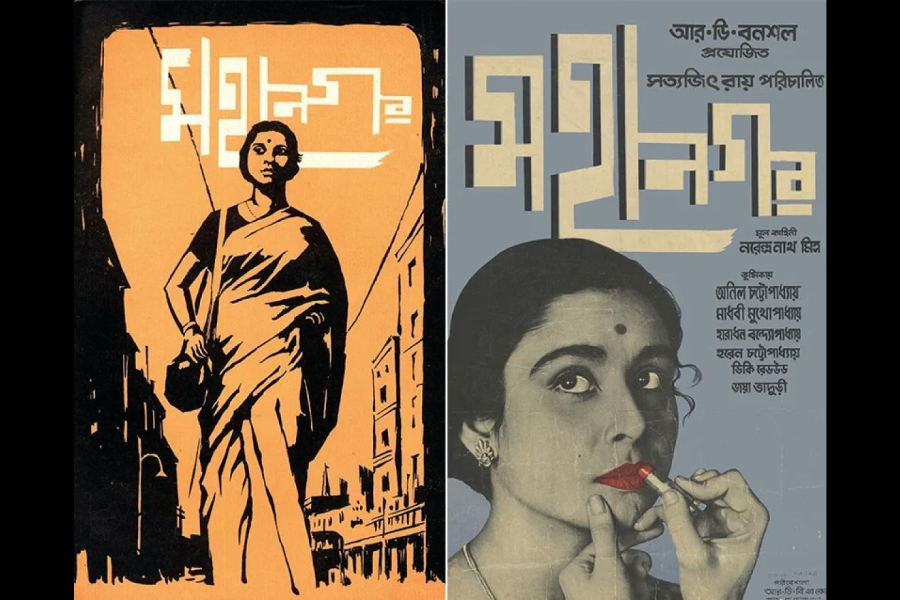
Booklet and poster of 'Mahanagar'
Prasenjit Dasgupta said Feluda’s admiration for Sherlock Holmes was manifest long before London-ey Feluda. “In Badshahi Angti, Topshe writes that Feluda said Arthur Conan Doyle had written whatever there is to write (on detectives). Our job was to follow him. The question is whether Feluda followed Sherlock or Satyajit followed Conan Doyle. All subsequent detective story writers have been influenced by him. But to us, Feluda is a guide on what should be done and read as we grew up. Even Tintin was referred to in Kailashe Kelankari. Afterwards, Tintin started appearing in Anandamela, which we later learnt was translated in Bengali and serialised on Ray’s suggestion to the magazine.”
The conversation fanned out on topics like whether Byomjatrir Diary was Professor Shonku’s last entry and the changing look of Feluda from his first adventure, Feludar Goendagiri, in which the audience members enthusiastically joined in.


